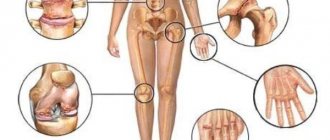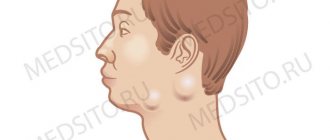Chronic adnexitis, or salpingoophoritis, is a chronic inflammatory disease of the fallopian tubes and ovaries. This is one of the most common gynecological pathologies - according to statistics, every second woman is familiar with it. Treatment of chronic adnexitis should be comprehensive. One of its areas is physiotherapy. Today in our article we will talk about what methods of physiotherapy are used for chronic adnexitis, as well as the causes, signs and principles of diagnosing this disease.
What is adnexitis?
Adnexitis is an inflammatory process of the uterine appendages (here we mean that the inflammation affects the fallopian tubes, ligaments, and ovaries). There are two types of penetration of microorganisms into the pelvic organs - ascending and descending.
If the infection enters the fallopian tubes from the uterus, then all layers of the reproductive organs begin to become inflamed (the pathology is called salpingitis). If only the ovary is affected, then the pathology is defined as salpingoophoritis. What is the downward route of infection? This means that the infection penetrates from the abdominal organs (for example, from inflamed appendicitis) into the uterus.
With adnexitis, almost simultaneous inflammatory formation occurs both in the ovaries and in the fallopian tubes. According to the nature of the course and degree of complication of the disease, acute and chronic forms of adnexitis are distinguished.
Types and classification of the disease
Andexit has its own classification and types. Thus, the disease is classified according to the ways in which harmful microorganisms entered the uterine appendages:
- myosalpingo-oophoritis . The rarest form of the disease. In this situation, microbes must enter the appendages from muscle tissue;
- peresalpingo-oophoritis . As a rule, an infectious lesion originates from the abdominal organs, after which it passes through the adipose and connective tissue to the uterine appendages;
- endosalpingo-oophoritis . The infection enters the uterine appendages through mucous tissue. For example, through the cervix.
By type, adnexitis is divided as follows:
- Left-handed . In this case, an inflammatory process develops on the left side - on the fallopian tube and on the ovary. At this time, the woman feels weakness, chills and pain on the left side. Pain often occurs during sexual intercourse. Lack of treatment will lead to the proliferation of connective tissue, which in turn will cause ovarian dysfunction and obstruction.
- Right-handed . In this situation, the woman will feel discomfort on the right side. However, it is extremely important for the gynecologist to determine whether the observed symptoms are signs of inflammation of the appendix, since in both cases the clinical picture is very similar in symptoms.
- Double-sided . Here we are talking about pathological damage to both uterine appendages. The inflammatory process then spreads to the ovaries. Often in this case, inflammation is accompanied by other diseases of the “female” side - for example, endometriosis.
- Chronic . In this case, the disease is characterized by alternating acute periods and remissions. Also, connective tissue gradually grows along the pipes, which ultimately leads to a narrowing of their lumen. This makes fertilization of the egg and normal pregnancy impossible.
- Spicy . In women, this period is often accompanied by a rise in body temperature, chills and fever. Blood tests will show a sharp increase in the amount of toxins. If the disease is not treated, it will develop into a chronic stage.
- Subacute . This stage is sometimes called subclinical. The infection develops over several weeks or even months. As a rule, women experience slight pain and vaginal discharge, which is often associated with sexual intercourse. Adnexitis at this stage is treated with a complex of antibiotics.
Adnexitis is also divided into specific and nonspecific . In the first case, inflammation can be caused by microorganisms that are part of the flora of the normal vagina: streptococci, staphylococci and other bacteria. In the second case, adnexitis can be caused by sexually transmitted microorganisms. For example, chlamydia.
Causes
If we are talking about the primary form of the disease, which develops as an independent disease, then its development is most often provoked by opportunistic microflora, which can enter the ovaries due to the use of an intrauterine device or a general decrease in immunity.
Statistics from modern medicine indicate that purulent inflammation of the uterine appendages is one of the most common complications of this type of contraception. However, pathological inflammatory agents can also enter the fallopian tubes as a result of surgical intervention - abortion, instrumental curettage, childbirth. In addition, the following factors can contribute to the development of adnexitis:
- multiple sexual partners;
- any intrauterine interventions, regardless of the purpose for which they are performed;
- sexual relations during menstruation and/or without barrier contraception;
- hypothermia due to reduced immunity;
- previous inflammatory diseases of the female genital organs.
Secondary adnexitis is characterized by development against the background of inflammatory diseases of organs located in the abdominal cavity - colitis, appendicitis, diverticulitis, etc. In some cases, the cause of inflammation of the uterine appendages is such specific infections as syphilis, gonorrhea, tuberculosis, chlamydia, ureaplasmosis, etc.
Why is adnexitis dangerous?
The problem of the disease is that it is practically asymptomatic, which prevents rapid detection and treatment.
Adnexitis is dangerous due to complications, including the formation of adhesions between the tube, uterus, ovary, pelvic wall, omentum, bladder and intestinal loops in the pelvis. If the infection penetrates the ovarian tissue, then purulent cavities can form in it (when they merge, the ovarian tissue melts). Subsequently, the ovary turns into a pus-filled saccular formation (ovarian abscess).
In acute adnexitis, due to the inflammatory fluid that accumulates in the fallopian tube, saccular formations (sactosalpinxes) arise with the accumulation of pus or serous fluid.
Another complication of acute adnexitis is a tubo-ovarian abscess, as a result of which the infection penetrates into the abdominal cavity, which will cause inflammation of the peritoneum (formation covering the cavity from the inside) of the pelvis, and subsequently peritonitis with various abscesses (interintestinal, rectovaginal recess).
With frequent exacerbations of chronic adnexitis, sexual disorders occur: painful sexual intercourse (dyspareunia), decreased libido. If treated incorrectly, acute adnexitis can become chronic, which in most cases leads to infertility and ectopic pregnancy.
Return to content
Classification
Adnexitis is classified according to the nature of its spread, the type of course, and less often - according to the infectious pathogen.
The course of the disease allows us to distinguish the following forms:
| Acute adnexitis | It is characterized by sharp pain in the lower abdomen. Accompanied by fever, chills, intoxication, symptoms of peritoneal irritation, and difficulty urinating. |
| Chronic adnexitis | It is characterized by dull, constant pain, disturbances of the menstrual cycle and sexual function. It is a complication of acute inflammation. |
Previously, subacute adnexitis was diagnosed as untreated acute or a harbinger of chronic; but currently only these two forms are used to make a diagnosis.
What are the consequences of chronic inflammation of the appendages?
In the absence of treatment or premature refusal to take antibiotics, the inflammatory process may resume, causing:
1 formation of adhesions in the fallopian tubes and abdominal cavity (one of the most common causes of female infertility and ectopic pregnancy);
2 polycystic ovarian syndrome;
3 decreased libido;
4 menstrual irregularities;
5 spread of infection to neighboring organs (uterus, bladder, gastrointestinal tract);
6 accumulation of pus in the fallopian tube covered with adhesions (if the affected organ is not cleaned/removed in time, its shell may not withstand the pressure of the accumulated substance and rupture).
Symptoms of adnexitis
The course of acute adnexitis is accompanied by the following symptoms: pain in the lower abdomen, radiating to the lumbar or sacral spine. Sometimes the following signs are observed: an increase in body temperature within 38-40 degrees, muscle tremors with a feeling of cold, nausea, vomiting, bloating, urination problems, purulent discharge from the genital tract.
When palpating the patient, sharp pain is detected in the lower abdomen, and a symptom of muscle protection may also be expressed. In some cases, the disease is asymptomatic. The average duration of acute adnexitis is 7-10 days.
The outcome of acute adnexitis is most often the chronic form. The picture of symptoms in comparison with the acute process is not so obvious. Women who suffer from a chronic form of adnexitis note that the pain, concentrated in the lower abdomen and groin, radiating to the thigh, sacrum or anus, is not constant, but periodic. Pain may increase after a stressful situation, hypothermia, or before the onset of menstruation.
Most often, adnexitis is accompanied by menstrual irregularities. Menstrual flow becomes scanty and the interval between them increases (oligomenorrhea). With chronic adnexitis, periodic exacerbations occur due to re-infection, weakened immunity, or infection that is resistant to prescribed antibacterial therapy.
With an exacerbation of chronic adnexitis, general well-being is disturbed, body temperature may increase, pain may increase, and purulent vaginal discharge may appear.
Remission stage
What features does remission have in chronic adnexitis, what is it and how to treat it? This question is often asked by women suffering from this disease. The chronic form of adnexitis is characterized by a long course. Throughout the disease, periods of exacerbation of the condition (relapses) and subsidence of the disease occur. A condition in which the symptoms of the disease are mild and the patient feels normal is called remission.
Stages of chronic adnexitis
Chronic adnexitis can occur in two stages.
Exacerbation. Chronic adnexitis in the acute stage is accompanied by an increase in body temperature, an increase in the volume of purulent discharge from the vagina, and acute pain in the lower abdomen (when palpating the affected area, increased pain is observed). The uterine appendages increase in size and become clearly visible on X-ray photographs, the abdomen is tense, the woman complains of muscle pain, headaches, and increased sweating. Laboratory studies demonstrate an increased number of leukocytes in the blood. Remission
When answering patients’ questions “adnexitis and remission - what is it,” gynecologists focus on the fact that the disease can subside for a long time, without making itself felt at all. In some women, chronic inflammation of the uterine appendages in remission is accompanied by mild symptoms (for example, low-grade fever that stays at 37 ° C).
Chronic adnexitis in remission: what is it and how does it manifest itself externally?
Chronic adnexitis, brought into remission, is characterized by low-grade inflammation in the uterus and its appendages. The unfavorable process lasts more than 3 months and is provoked by pathological bacteria that have entered the uterus from other organs or the vagina. The infectious agent that has entered the uterus, ovaries, or fallopian tubes may be specific or nonspecific. These parameters are influenced by the type of pathogen, the mechanism of development of the pathological condition, and the method of transmission of infection. Chronication of an acute disease occurs due to a woman’s untimely visit to the hospital or poor quality treatment.
Specific pathogens of chronic adnexitis include pathogenic organisms localized in various parts of the genitourinary system. This category also includes sexually transmitted infections. For example, chronic adnexitis with remission, cervicitis, colpitis, endometritis and other inflammatory processes in the genitourinary system can be provoked by Escherichia coli and Pseudomonas aeruginosa, gonococci, mycoplasmas, chlamydia, and ureaplasmas.
The main factor leading to sexually transmitted infections entering the female body is unprotected sexual intercourse. If a woman’s sex life is irregular or she often changes sexual partners, her risk of developing chronic adnexitis increases.
The clinical picture of chronic adnexitis is blurry. If during periods of exacerbation of the disease a woman experiences pain and discomfort, then during remission such symptoms are not observed. However, intoxication of the body still makes itself felt. The patient complains of headaches, severe weakness, menstrual irregularities (menstruation becomes heavy and painful, and occurs irregularly). Laboratory blood tests confirm that there is a hidden infection inside the body.
Chronic adnexitis and incomplete remission - features of the course of the pathology
The stage of incomplete remission in chronic adnexitis manifests itself in the form of mild symptoms characteristic of acute inflammation. A woman may experience nagging pain in the lower abdomen, heaviness in the lower back, she has a low-grade fever, weakness, and fatigue. In case of incomplete remission of salpingo-oophoritis, it is advisable to protect your body from hypothermia, dress according to the season, undergo physiotherapeutic treatment (UV irradiation, electrophoresis with potassium, iodine, zinc, magnesium, ultrasound and UHF therapy, vibration massage, therapeutic mud). An integrated approach to treatment and timely diagnosis of the pathology helps to achieve sustainable remission of chronic adnexitis.
Diagnostics
Making the correct diagnosis is quite difficult, since the signs of an acute abdomen, characteristic of adnexitis in the acute form, are characteristic of many acute diseases of the pelvic organs, and the symptoms of adnexitis in the chronic form, as a rule, are not pronounced.
To diagnose adnexitis, a gynecological examination is performed, including laboratory analysis of vaginal discharge, blood and urine testing, including urine culture. The detection of microorganisms typical of adnexitis in urine and vaginal contents may indicate existing adnexitis, but still these signs are not specific, just like signs of the body’s inflammatory reaction detected in the blood. Some symptoms can be detected using ultrasound.
An accurate diagnostic method that eliminates error is laparoscopy, which is used in doubtful cases. This is an endoscopic study that allows you to visualize the fallopian tubes and ovaries and directly detect signs of inflammation: accumulations of pus and serous effusion, inflamed mucous membrane in acute adnexitis, and adhesions with changes in the structure of appendage tissue in chronic adnexitis.
Treatment
Treatment of chronic adnexitis is prescribed based on the results of diagnostic studies, including general blood and urine tests, a vaginal smear for flora and for the presence of infections, ultrasound and gynecological examination. If adnexitis is detected during pregnancy, treatment is carried out using more gentle methods.
To confirm the type of infection, it is necessary to take a smear from the cervix
Fact: therapy for chronic bilateral and unilateral adnexitis does not differ in methodology.
Most often, for chronic adnexitis caused by infections, antibiotics are prescribed. As a rule, these drugs have a wide spectrum of action and are capable of destroying many types of microorganisms. When getting rid of infectious foci, the patient's condition improves significantly and symptoms decrease.
In case of exacerbation of chronic bilateral or unilateral adnexitis, antipyretic and painkillers are prescribed to alleviate the patient's condition. Most often, treatment of this kind of exacerbation requires hospitalization and constant supervision of a doctor who knows how to treat chronic adnexitis. If treated incorrectly, complications may arise that lead to the development of other diseases of the genital organs and/or infertility.
To relieve the symptoms of chronic adnexitis and speed up recovery, treatment with folk remedies can be used. This therapy can be carried out independently and at home. For this, plants with antiseptic, anti-inflammatory and antimicrobial properties are usually selected - chamomile, calendula, yarrow. Weak decoctions prepared from them are used as medicinal baths or douches. Before undertaking this type of treatment, you should always consult your doctor.
The duration of the baths is about 10-15 minutes.
Important! The course of douching should not exceed ten days, otherwise this can reduce local immunity and “wash out” beneficial bacteria.
Treatment of acute adnexitis
The sooner treatment for an acute infection of the appendages is started, the higher the chances of a complete cure. It should be noted that sometimes, if a woman has good immunity, the body itself successfully copes with acute adnexitis, and the inflammation goes away without a trace.
Treatment of acute purulent adnexitis begins after urgent hospitalization of the patient. In case of a milder course of the disease, it is possible to allow the woman to be treated at home. Timely initiation of therapy eliminates acute inflammation and its consequences within ten days. To get rid of acute inflammation in the fallopian tubes and ovaries, it is necessary to eliminate its cause, that is, the infection. The leading method is antibiotic therapy. Antibacterial drugs for the treatment of adnexitis are selected only after a laboratory report, which not only identifies the pathogen, but also determines the antibiotic necessary to destroy it. [adsen]
There is no universal antibiotic therapy regimen for acute adnexitis, since in each specific case the inflammation is provoked by a microbial association of different composition. It is also impossible to choose the right antibiotics for adnexitis on your own.
The form of antibiotic administration depends on the severity of the disease. Injectable (into a vein or into a muscle) drugs or tablets are used. A combination of two antibiotics from different groups with different forms of administration is often used. It is extremely important to explain to the patient that recovery directly depends on how accurately the instructions for taking medications are followed. Antibiotics for adnexitis should be taken in the amount specified by the doctor. If medications are stopped early or their dosage is not followed, the infection remains in the appendages and continues its destructive effect.
In parallel with antibacterial therapy, symptomatic treatment is carried out. It is aimed at alleviating the symptoms of inflammation (pain and fever) and strengthening the immune system.
Some patients ask to recommend “suppositories for adnexitis.” Local treatment cannot rid the appendages of infection, so it is prescribed only as part of complex therapy to eliminate associated negative symptoms. Suppositories for adnexitis may contain anti-inflammatory, analgesic and antipyretic components. The most commonly used are suppositories with Indomethacin, Belladonna, as well as Movalis and Longidaza suppositories.
Drugs for the treatment of adnexitis
Treatment of adnexitis is possible with various antibacterial drugs. For more effective treatment, before prescribing the drug, a test is done to determine the susceptibility of the microorganisms that caused inflammation in the appendages. The doctor also prescribes painkillers and anti-inflammatory drugs, and physiotherapeutic procedures. In the case of an acute course of the disease, the doctor may refer for compulsory hospitalization.
The most well-known antibacterial drugs for the treatment of inflammatory processes in the appendages are as follows:
- Erythromycin is the most effective drug that destroys chlamydia and mycoplasmosis. The duration of administration and dose are determined by the doctor, taking into account the severity of the disease and the patient’s condition. In some cases, erythromycin is replaced with ofloxacin, azithromycin, and dioxycillin.
- Metronidazole – used for trichomoniasis (as well as for all sexually transmitted diseases). Based on the diagnostic data, the doctor determines the course duration and dosage (the drug is available in tablet form).
- Ceftibuten is an antibiotic active against a large number of microorganisms, available in capsules. This drug can be replaced by similar ones: cefaclor, cefuroxime.
- azithromycin (Zamax) – prescribed for diseases of the genitourinary system, urethritis (gonorrheal and non-gonorrheal), cervicitis, etc.
For local treatment, vaginal suppositories with antibiotics (fluomizin, movalis, etc.) can be used. In combination with general treatment, drugs speed up the healing process and reduce pain.
Trichopolum
The active ingredient of trichopolum is mitranidazole, which has an antimicrobial and antiprotozoal effect. Treatment of adnexitis with trichopolum occurs when anaerobic bacteria are identified. The drug is not used for serious disorders of renal and hepatic function, bone marrow, and nervous system. The course of drug therapy usually lasts no longer than 10 days; if the doctor decides to continue treatment with Trichopolum, liver function and the condition of peripheral blood should be monitored.
Dimexide
Dimexide is an anti-inflammatory drug and also has a local analgesic effect.
The drug penetrates well through mucous membranes and increases the sensitivity of bacteria to antibacterial drugs. Dimexide has slight toxicity.
Complex treatment of adnexitis, along with antibiotics, anti-inflammatory and other agents, includes tampons with dimexide and novocaine (1:4).
[], [], []
Biseptol
Biseptol is a bactericidal combination agent, available in the form of tablets or intravenous injections. Treatment of adnexitis must necessarily include an antibacterial drug that suppresses and destroys pathogenic microflora. Biseptol is indicated for anaerobic gram-positive and gram-negative microorganisms, chlamydia, etc.
[]
Wobenzym
Wobenzym has a general effect on the body: relieves inflammation, swelling, improves immunity and improves blood circulation. All this makes the drug in demand in the treatment of many gynecological diseases. Wobenzym is often included in the complex treatment of adnexitis. One distinctive feature of Wobenzym is that the drug has the ability to inhibit the proliferation of connective tissue (prevents the formation of adhesions).
Viferon
For a viral infection, Viferon is prescribed, which in complex therapy blocks the growth and reproduction of viruses. Treatment of adnexitis caused by the herpes simplex virus and papilloma often occurs with Viferon, which has shown good effectiveness. One of the advantages of the drug is that it makes healthy cells immune to viruses.
Metronidazole
Treatment of adnexitis caused by anaerobic microorganisms is carried out using nitroimidazoles. Metronidazole is a drug in this group and has the ability to destroy most anaerobic bacteria. The drug has proven itself in the treatment of the genitourinary system. Metronidazole is available in tablet form, the course of treatment is determined by the attending physician.
Treatment of chronic adnexitis
In the stage of exacerbation of chronic adnexitis, treatment measures corresponding to the acute process are carried out (hospitalization, antibacterial, infusion, desensitizing therapy, vitamins). After the exacerbation of inflammation of the appendages subsides, it is recommended to carry out autohemotherapy, aloe injections, physiotherapy (UV irradiation, electrophoresis with drugs (lidase, potassium, iodine, magnesium, zinc), UHF therapy, ultrasound, vibration massage) under the control of laboratory and clinical parameters.
Physiotherapeutic procedures used for inflammation of the appendages reduce tissue exudation, have a resolving and analgesic effect, and help reduce the formation of adhesions. Effective for chronic inflammation of the appendages are therapeutic mud (ozokerite), paraffin treatment, therapeutic baths and vaginal irrigation with sodium chloride and sulfide mineral waters. In the stage of stable remission of adnexitis, spa treatment is indicated.
Diagnosis of adnexitis
Diagnosis of chronic adnexitis is carried out by a doctor based on the patient’s medical history.
Analysis of data from the medical history of a patient with chronic adnexitis is complemented by an external examination and a two-manual gynecological examination.
Diagnosis of chronic forms of adnexitis is also carried out using instrumental techniques from the following list:
- echography (using a diagnostic procedure, it detects adhesions in the pelvic organs and inflammatory thickening of the fallopian tubes);
- MRI;
- CT;
- Ultrasound of the vagina (on ultrasound, signs of chronic adnexitis appear in the form of enlarged appendages, thickening of the fallopian tubes)
Chronic inflammation in the uterine appendages cannot be diagnosed by blood tests. The only thing a doctor can detect in such an analysis is an increased erythrocyte sedimentation rate (ESR). In comparison, bacteriological and bacterioscopic examination of smears taken from the walls of the vagina, urethra and cervical canal will be more informative. The results of diagnosing chronic adnexitis become the basis for drawing up a treatment regimen and preventing exacerbations.
Additionally the following can be carried out:
- Hysterosalpingography;
- Tuberculin tests;
- Cultures of menstrual blood and others.
- Anamnesis;
- General blood analysis;
- Blood chemistry;
- General urine analysis;
- Bacteriological examination of a smear from the cervix;
- Ultrasound examination (ultrasound) of the uterine appendages.
In order to diagnose the disease, the gynecologist conducts an examination using mirrors and a digital examination. To confirm the diagnosis, the following instrumental studies may be prescribed:
- Ultrasound examination of the pelvic organs. It can be transabdominal (the sensor is applied to the lower abdomen) or transvaginal (the sensor is inserted into the vagina). Thickening of the walls of the fallopian tubes, anechoic contents, accumulation of fluid in the space behind the uterus and adhesions, heterogeneous structure of the ovaries and blurred contours are determined.
- Laparoscopy. A tube with a lens system (laparoscope) is inserted into the abdominal cavity through small holes under local anesthesia. Using this device, the ovaries and fallopian tubes are examined, determining the presence of inflammation, pus and adhesions.
- Metrosalpingography. A contrast agent is injected into the uterine cavity and fallopian tubes, which is monitored on x-rays. The study is necessary to check the patency of the fallopian tubes.
Laboratory research methods include:
- Bacteriological examination of a smear.
- General and biochemical blood test.
- General urine analysis.
- Smear for oncocytology.
- An examination to detect sexually transmitted infections.
The main diagnostic research methods that are used to diagnose “adnexitis” are as follows:
- careful collection of complaints and anamnestic data;
- full gynecological examination;
- ultrasound examination of the pelvic organs;
- detailed blood and urine analysis;
- bacterioscopic examination of the contents of the vagina and cervical canal;
- laparoscopy;
- hysterosalpingography.
When establishing a diagnosis of adnexitis, it is necessary to carry out differential diagnosis with the following diseases:
- appendicitis;
- ectopic pregnancy;
- endometriosis;
- renal colic;
- peritonitis;
- neoplasms of the intestines and ovaries;
- spontaneous miscarriage;
- rupture of an ovarian cyst.
Diet
Prescribing a diet for acute or subacute salpingoophoritis is important in terms of increasing the body’s resistance to infection and improving metabolic processes in the source of inflammation. The diet should be hypoallergenic. This means that the sick person cannot eat egg whites, sweets, mushrooms, chocolate, carbohydrates in limited quantities, and table salt. It is better to eat food stewed or boiled.
In case of adnexitis without exacerbations, a diet is not established in principle. All you need is a balanced and rational diet. Vitamins are required.
Complications of chronic adnexitis
Chronic recurrent inflammation of the appendages often leads to the development of pathological pregnancy outcomes (ectopic pregnancy, spontaneous miscarriage) and secondary infertility. Infertility in chronic adnexitis can be a consequence not only of anatomical and functional changes in the appendages, but also of ovarian dysfunction (menstrual disorder, anovulation, etc.). Such mixed forms of infertility, resulting from inflammation of the appendages, are extremely difficult to treat.
With chronic adnexitis, the formation of infiltrates, the development of sclerotic processes in the fallopian tubes, their obstruction, and the formation of adhesions around the ovaries are noted. From a chronic focus with adnexitis, the infection can spread to other organs, provoking the development of colitis, cystitis, and pyelonephritis.












